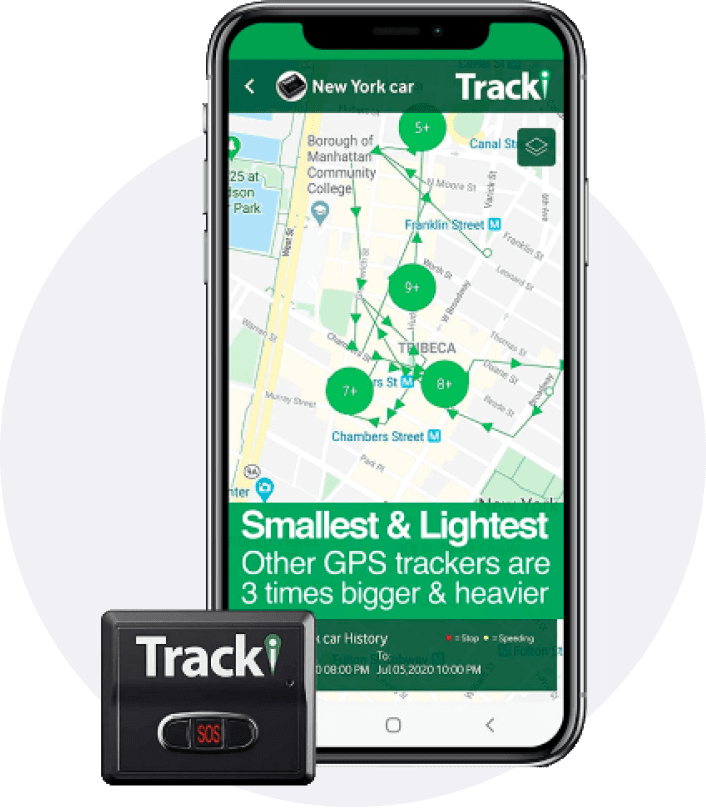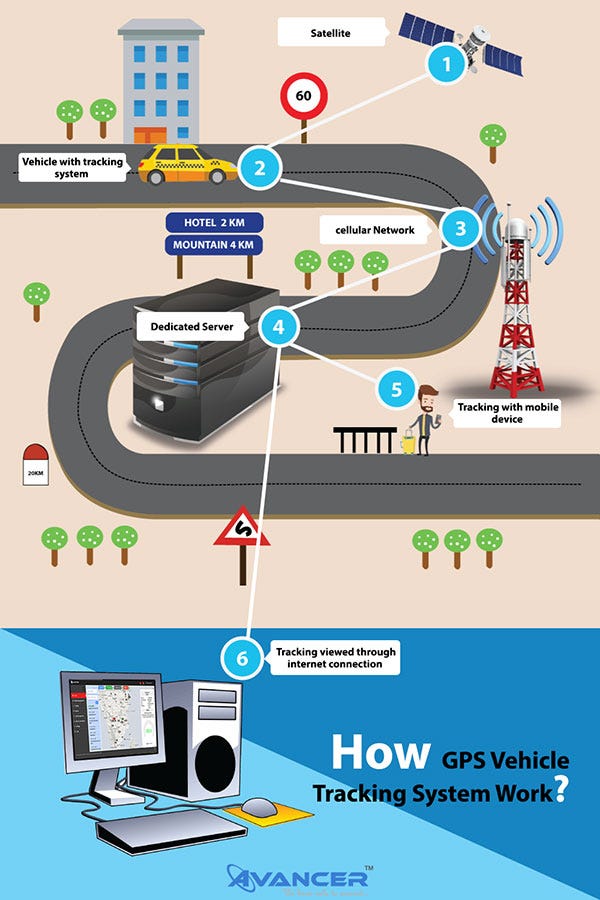Making Best Use Of Effectiveness With GPS Tracking: Techniques for Fleet Management and Asset Surveillance
In the world of fleet monitoring and possession tracking, the use of GPS tracking systems has actually come to be a foundation for enhancing functional effectiveness and productivity. By using the power of real-time data, companies can simplify their logistics, maximize routes, and enhance total fleet efficiency. The real potential lies not only in the execution of these technologies yet also in the critical utilization of the insights they give. From improving driver safety to making educated choices based on detailed data analytics, the possibilities are vast. As we explore the numerous strategies and methods to make the most of performance with GPS tracking, a world of possibilities opens up to redefine just how companies manage their fleets and monitor their assets.
Implementing Real-Time Monitoring Solutions
To optimize operational performance, business can implement real-time radar that supply instant location information for their properties. By using GPS modern technology, services can gain real-time understandings right into the whereabouts of their automobiles, tools, and various other valuable resources. This degree of visibility permits companies to improve procedures, boost performance, and improve overall performance.
Real-time tracking systems use numerous benefits for business throughout various markets. With the capacity to keep track of possessions continuously, organizations can optimize routing, timetable upkeep a lot more properly, and lower the danger of theft or loss. In addition, these systems make it possible for companies to respond quickly to any unexpected events or disruptions, ensuring marginal downtime and maximum efficiency.
Carrying out real-time tracking systems calls for mindful planning and factor to consider of certain business demands. Firms need to choose the best modern technology service provider, personalize the system to meet their demands, and give adequate training to workers. By buying real-time tracking options, businesses can stay ahead of the competitors, deliver remarkable customer care, and attain sustainable growth in today's fast-paced market environment.
Optimizing Path Preparation and Organizing

One trick method for optimizing course preparation is to use historic data and real-time details to identify one of the most effective paths for lorries. By examining previous routes and considering variables such as website traffic patterns and delivery windows, businesses can develop schedules that minimize unnecessary quits and delays. In addition, carrying out vibrant routing abilities enables adjustments to be made in real-time based on altering problems, making certain that vehicle drivers always take the most effective course to their location.
Enhancing Driver Efficiency and Safety And Security
Enhancing chauffeur efficiency and security is vital in making certain the protected and smooth operation of a fleet. By making use of GPS monitoring innovation, fleet supervisors can check motorist behavior in real-time and offer immediate feedback to advertise risk-free driving methods. This includes tracking rate limitations, harsh stopping, acceleration patterns, and adherence to website traffic policies.
Moreover, GPS radar can assist in identifying vehicle drivers who might require additional training or support to boost their performance (gps tracking). By assessing data on driving patterns and practices, fleet supervisors can carry out targeted training programs to attend to specific areas of improvement. This aggressive method not just improves overall chauffeur efficiency but also adds to a more secure work setting for everyone included
In enhancement to efficiency tracking, general practitioner radar can additionally enhance motorist security by providing emergency support functions. In case of an accident or breakdown, drivers can rapidly send out distress signals, permitting fleet managers to react promptly and send off help when needed. Overall, integrating GPS tracking technology into fleet monitoring approaches is important for optimizing vehicle driver efficiency and making certain the safety of both chauffeurs and properties.

Making Use Of Geofencing for Enhanced Safety And Security
Making the most of fleet security goes past checking driver efficiency and safety and security; one reliable technique is via the tactical use geofencing innovation. Geofencing permits fleet managers to establish virtual limits or geozones around particular places, enabling them to obtain real-time notifies when cars get in or leave these designated areas. By establishing geofences around high-risk places such as building sites, unauthorized locations, and even customer places, fleet supervisors can improve protection measures and mitigate potential dangers.
Geofencing not only boosts safety but also allows quick feedback times in situation of unauthorized lorry usage or theft. In the event of a violation, notifies why not try these out can be sent out to fleet here supervisors, enabling them to take immediate action to locate and recoup the vehicle. In addition, geofencing can assist in monitoring lorry activity throughout off-hours, ensuring that cars are not being made use of for unapproved purposes.
Incorporating GPS Information for Strategic Decision-Making
Utilizing GPS data integration is crucial for informed calculated decision-making in fleet monitoring operations. By incorporating GPS information into fleet administration systems, organizations can gain important understandings right into their operations, causing extra reliable routes, boosted motorist habits, and much better total efficiency. Via the combination of GPS data, fleet managers can track vehicle areas in real-time, monitor fuel consumption, and examine vehicle driver efficiency metrics such as speed, idling time, and severe braking.
Additionally, incorporating GPS information permits for the optimization of paths based on web traffic conditions, weather patterns, and other outside variables, helping to lower shipment times and functional prices. By evaluating historical GPS information, fleet supervisors can identify fads, patterns, and areas for improvement, allowing them to make data-driven decisions that boost efficiency and streamline operations.
Conclusion
In final thought, the execution of GPS radar can greatly enhance effectiveness in fleet management and property tracking. By making use of real-time tracking, enhancing course planning, improving vehicle driver performance, utilizing geofencing for protection, and integrating GPS information for critical decision-making, companies can improve procedures and accomplish expense savings (gps tracking). These methods enable businesses to improve processes, boost efficiency, and ultimately make the most of the general efficiency of their procedures
In the realm of fleet monitoring and asset surveillance, the usage of GPS tracking systems has actually ended up being a cornerstone for enhancing operational effectiveness and productivity. As we check out the different techniques and techniques look at this now to make best use of effectiveness with General practitioner monitoring, a globe of opportunities opens up to redefine just how companies manage their fleets and monitor their properties.
By making use of GPS tracking innovation, fleet managers can monitor driver habits in real-time and provide immediate feedback to advertise risk-free driving methods. With the integration of GPS information, fleet supervisors can track vehicle locations in real-time, monitor gas consumption, and examine motorist performance metrics such as rate, idling time, and rough stopping.
In verdict, the implementation of General practitioner tracking systems can greatly improve performance in fleet management and property tracking.
Comments on “How GPS Tracking Can Boost Your Service Workflow”